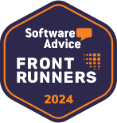36 MINS
How To Maximize Your Crowdfunding Campaign
DonorPerfect Training Manager Kelly Ramage shares how a customer surpassed their goal threefold using a crowdfunding form and demonstrates how you can achieve similar success.
Categories: Giving Tuesday, How To, Expert Webcast
Transcript
Print TranscriptSorry, the transcript is currently unavailable.





